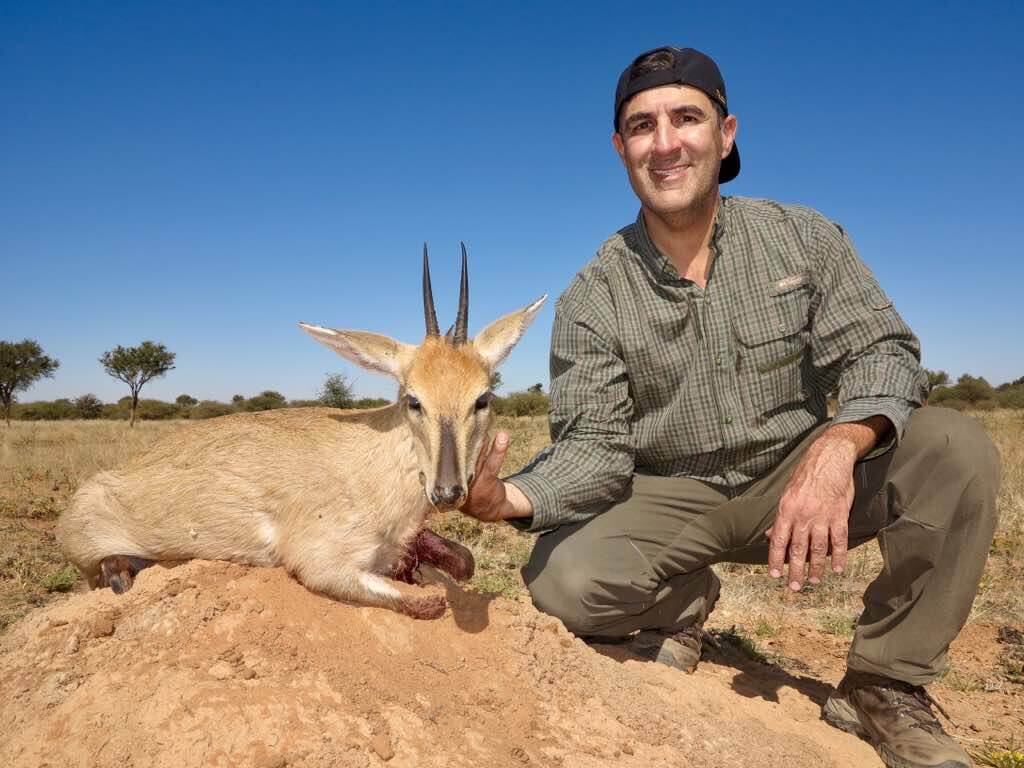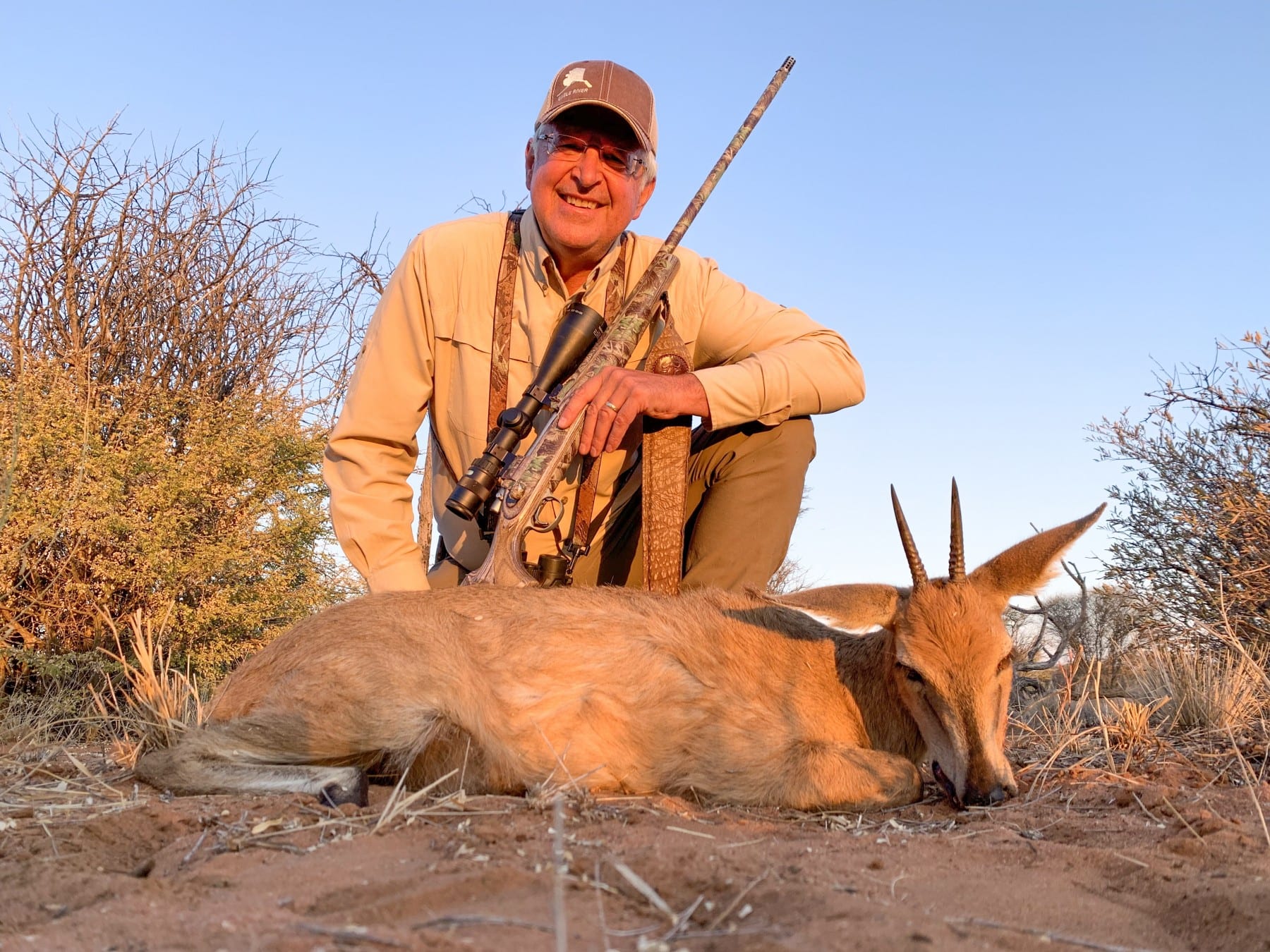The common, or grey, Duiker is a tiny, shy antelope with only the males having short horns. The common name refers to a characteristic habit of taking off at high speed in a series of diving jumps when alarmed.
Duiker browse a wide range of broad-leaved forbs, trees and bushes, they also eat fruit, pods and seeds, roots, bark, flowers, fungi, caterpillars and even nestling birds. In arid areas wild melons are eaten for their water content. Duiker can become a problem in crops, orchards, vineyards and plantations.
Duiker do not live in forests, although they will take refuge in forests when hiding from a predator. Duiker are widely distributed in Southern Africa, but absent from desert regions. The Common Duiker is usually seen at dawn and dusk in open scrub country. They avoid open grassland where there is no shelter.




